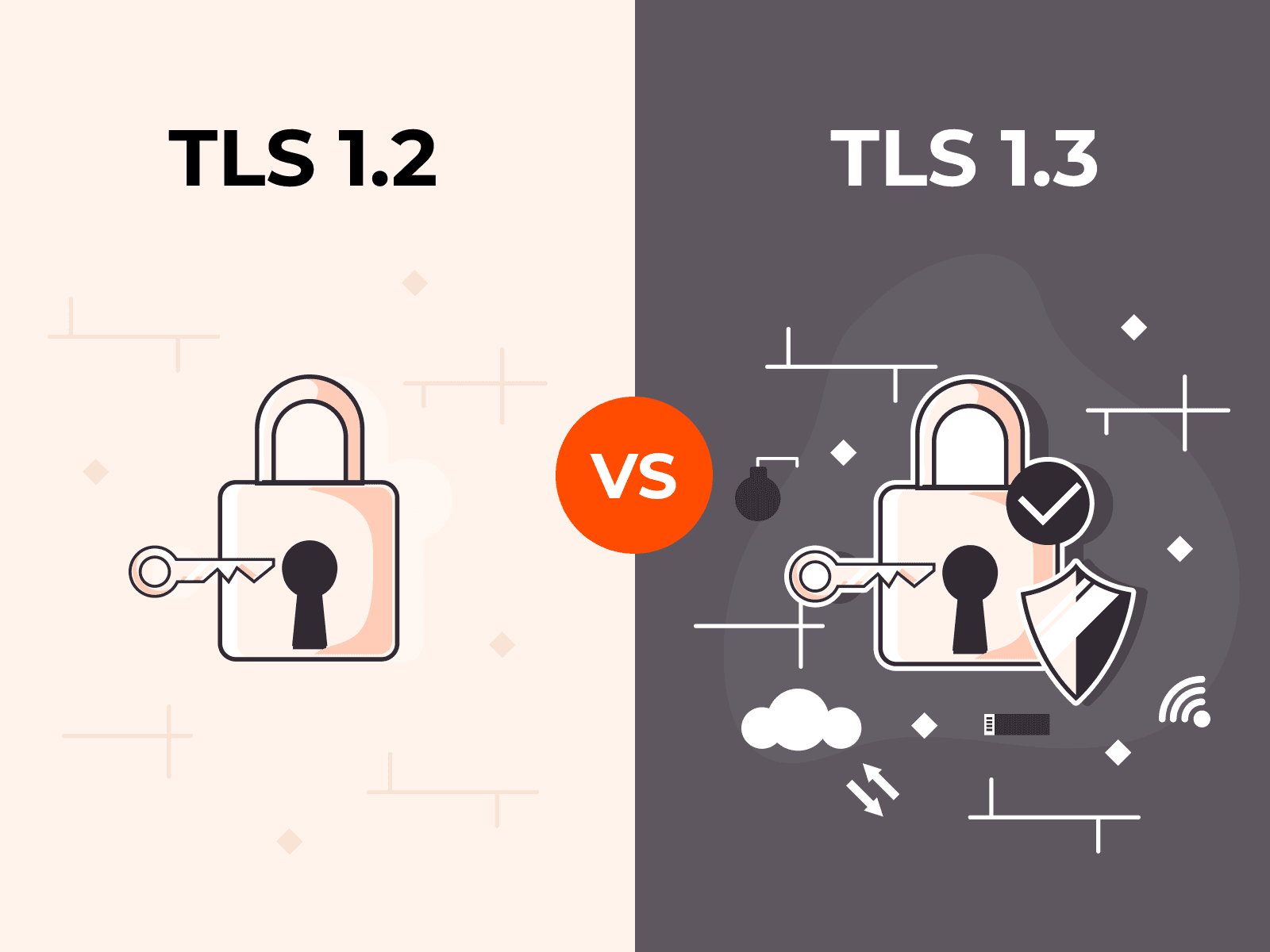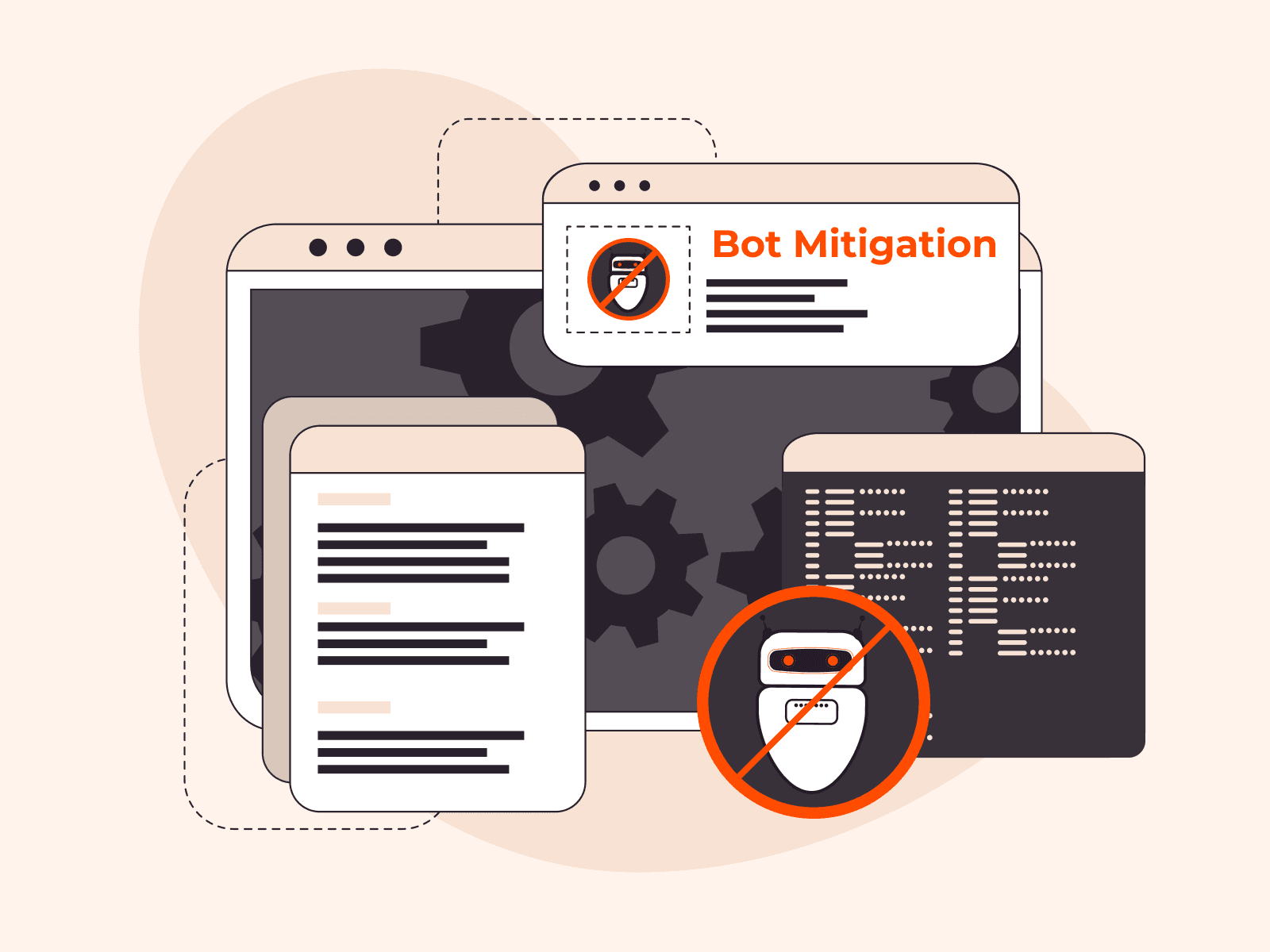Today, software applications are part of our everyday life, and with that being the case, we put more and more of our personal data into apps. If exposed, private or confidential data, such as usernames, passwords, or credit card verification values, can be consumed by malicious attackers, bringing serious problems to application owners and risking their brand reputation. Encryption is one way to mitigate the impact of a data breach, which exposes private and confidential data to unauthorized users. In this article, you will learn what encryption is, how it works, different types of encryption, and the best practices of encryption, so that you can efficiently apply encryption to secure sensitive data in your software applications.
What Is Encryption?
Encryption transforms human-readable data into incomprehensible data so that only users who have permission to access that data can read it. Encryption can apply to multiple data formats such as text, images, or videos. Depending on your use case, the encryption method can be simple or complicated. As the encryption method becomes more complex, it also requires more time and system resources for the receiver to decode the data. Therefore, you must balance the strength of the encryption method with the desired performance.
Why Should You Use Encryption?
You should use encryption to keep your customers’ personal data safe from attackers. By using encryption, you can securely store sensitive information, such as usernames, passwords, and credit card verification values, in the apps your customers trust. This is important for maintaining your brand’s reputation and, therefore, customer loyalty. A data breach can even have legal consequences, so it’s vital to use encryption to avoid these potential problems.
There are many methods available to protect private user and company data, such as implementing user access controls, setting up a firewall for the company’s internal network, or scanning infrastructure configuration for security misconfigurations. However, despite these measures, malicious users can still access any data that they managed to steal. Encryption adds a layer of security to the data, making it more difficult for malicious users to decrypt if exposed and increasing that chance that it remains safe even if it falls into the wrong hands.
How Does Encryption Work?
Encryption uses an algorithm and a key to encrypt the data. For example, say you want to encrypt your password, “Alabama1985”. A simple encryption method can be implemented by converting each character in the password into an ASCII value and adding 5 to the value of each converted character. In this case, the encrypted password would be ’7511310210310211410254626158’. Here, the encryption algorithm is ASCII and the encryption key is 5.
The strength of your encrypted data depends on the length of your key, the key’s entropy, and the type of encryption used.
What Is Key Length and Why Does It Matter?
Key length, as the name implies, refers to the length of the key in bits. A larger encryption key size provides more security, if the algorithm is the same. Let’s consider the Advanced Encryption Standard (AES) algorithm (a common and highly secure choice) as an example.
The AES algorithm is a block cipher, which means it encrypts data block by block rather than encrypting it as a whole. Each data block in AES is 128 bits. Think of your data as a series of boxes, and each box is 128 bits in size. The AES uses digital keys—like real keys—to lock or unlock these boxes. The key lengths available for AES encryption are 128, 192, and 256 bits. The bigger the key, the stronger the lock.
The AES algorithm initially creates the pre-round key. The pre-round key is then expanded to produce a set of round keys used in successive rounds of encryption. Within each round, the data is substituted, shifted, mixed, and transformed to produce the final encrypted data block.

128-Bit Key Length
With a 128-bit key length, the attacker must guest 2^128 times (the result is a 39-figure number) in order to find the correct key. The encryption process goes through ten rounds.
192-Bit Key Length
With a 128-bit key length, the attacker must guest 2^192 times (the result is a 58-figure number) in order to find the correct key. The encryption process goes through twelve rounds.
256-Bit Key Length
With a 128-bit key length, the attacker must guest 2^256 times (the result is a 78-figure number) in order to find the correct key. The encryption process goes through fourteen rounds.
Read: What Is a Denial of Service Attack (DoS)?
What Is Key Entropy?
Key entropy in the context of cryptography refers to the randomness or unpredictability of a cryptographic key. Besides the length of the encryption key, the randomness of the key plays a vital role in creating a robust encryption method. A key with high entropy is more secure because it is less likely to be correctly guessed or discovered by an attacker.
The key should be generated in such a way that it is difficult to predict based on specific patterns. There are many methods available to generate a random key, including the use of random number generators and key derivation functions (KDFs), which are two popular approaches. Let’s look at each in more depth.
Random Number Generators
There are two types of random number generators: hardware-based TRNGs and software-based PRNGs.
A hardware-based random number generator, also known as a true random number generator (TRNG), utilizes the physical properties of the machine, such as atmospheric noise, thermal noise, or quantum effects, to generate randomness. Therefore, numbers generated by TRNG are difficult to predict.
On the other hand, a software-based random number generator, known as a pseudo-random number generator (PRNG), uses a seed number and a predefined algorithm to generate random values. Since PRNG is based on a predefined algorithm, it follows a specific pattern, making the generated numbers predictable. This makes them less secure, but PRNGs are also cheaper and easier to use than TRNGs.
Key Derivation Functions (KDFs)
A key derivation function is a cryptographic function that derives keys from inputs such as passwords, shared secrets, or other keys. The key derivation function transforms the input through processes such as hashing, salting, and iteration. This transformation results in a highly randomized, complex, and secure key, making it harder to guess. Popular key derivation functions include password-based key derivation function 2 (PBKDF2), bcrypt, and scrypt.
PBKDF2 requires four inputs: a password, a salt, an iteration number, and the desired derived key length. Initially, PBKDF2 applies a predefined password and salt to a cryptographic hash function, such as HMAC-SHA-256 or HMAC-SHA-512, to produce a value with the specified key length. This process is iterated multiple times according to the iteration number. As a result, a secure derived key is obtained.

bcrypt is a key derivation function primarily designed for password hashing. Due to its heavy computational requirements, bcrypt is resistant to security attacks such as brute force.
scrypt is another key derivation function similar to bcrypt but offers increased memory hardness. Its hardware implementation is significantly more expensive than bcrypt. As a result, it provides greater resistance to parallelization and hardware attacks.
Read: What Does Blacklisted IP Mean? | Procedure to Remove IP From Blacklist
What Types of Encryption Exist?
There are three types of encryption: symmetric, asymmetric, and hybrid.
Symmetric Encryption
For symmetric encryption, the same key is used for both the encryption and decryption processes. Symmetric encryption works in three steps:
- Generate key: The shared key is generated using a key generation method.
- Encrypt data: The symmetric encryption ciphers the data using the generated key.
- Decrypt data: Finally, the receiver decrypts the data using the shared key.
Since the key is used for both encryption and decryption, it is vital for us to store it safely to prevent unauthorized access to it.
There are two popular algorithms in symmetric encryption: the Data Encryption Standard (DES) algorithm and the AES algorithm. Since we already discussed the AES algorithm in the “Key Length” section, let’s focus on how DES works.
How the DES Algorithm Works
The DES algorithm takes 64-bit plaintext as input. It then uses a 56-bit key length (initially, the key is 64-bit, but 8 bits are reserved for parity checks) to encrypt the data. This process is recursively applied 16 times. In each round, the round key generator produces a 48-bit key for encryption, as 8 bits are eliminated during the shifting process. Finally, the DES algorithm performs the final permutation on the data and produces the encrypted 64-bit ciphertext.

The DES algorithm is now considered relatively weak due to advances in computational power and cryptanalysis techniques. The AES algorithm is recommended for encryption since it is faster and more secure than DES.
Asymmetric Encryption
Asymmetric encryption, also known as public-key cryptography, employs two distinct keys for encryption and decryption processes. These keys are mathematically linked and consist of a public key, which is openly available, and a private key, which is kept secret by the owner.
Normally, the sender uses the receiver’s public key to encrypt the data, ensuring that only the intended recipient, who holds the corresponding private key, can decrypt the received ciphertext. Alternatively, the sender may choose to encrypt data using their private key. In this case, anyone can decrypt the data using the sender’s public key, which serves as a digital signature. This confirms the authenticity of the sender since only the owner of the private key could have encrypted the message.
Popular asymmetric encryption algorithms widely used in secure communication and data transmission are Rivest-Shamir-Adleman (RSA) and Elliptic Curve Cryptography (ECC) algorithms.
How the RSA Algorithm Works
RSA (Rivest-Shamir-Adleman) is one of the oldest and most widely used asymmetric encryption algorithms. It was first publicly described in 1977 and is based on the exponentiation of modular arithmetic. With RSA, you can encrypt the data using either the private or public key, and then use the other key pair to decrypt the cipher data.

How the ECC Algorithm Works
ECC is a modern asymmetric encryption algorithm gaining in popularity due to its strong security and relatively small key sizes compared to RSA. ECC is based on the mathematics of elliptic curves over finite fields. It offers equivalent security to RSA but with shorter key lengths, making it more efficient in terms of computational resources.

Hybrid Encryption
Hybrid encryption refers to the combination of both symmetric and asymmetric encryption to cipher the data. Symmetric encryption uses the same key for encrypting and decrypting, making the encryption process fast. On the other hand, asymmetric encryption uses different keys for encrypting and decrypting, making it more secure. By combining the use of symmetric and asymmetric encryption, the encryption process becomes both fast and secure.
Protocols like SSL/TLS (Secure Socket Layer/Transport Layer Security) use hybrid encryption to secure HTTPS. TLS/SSL employs asymmetric encryption with private and public keys to establish a secure connection between the client and the server. Then it utilizes symmetric encryption for data exchange.
Benefits and Drawbacks of Encryption
In this section, let’s find out the benefits and drawbacks of encryption.
Benefits of Encryption
Encryption offers vital benefits to business owners and app developers.
#1 Mitigates the Impact of Data Breaches
In the unfortunate event of a data breach, the attackers must decrypt the data to make sense of the information. In such cases, encryption acts as an additional layer of defense, reducing the impact and potential harm resulting from a data breach.
#2 Improves Data Privacy
Encryption helps improve data privacy by allowing only authorized users to access data. Digital signatures, generated using asymmetric encryption like RSA, validate the authenticity of the data.
For instance, the sender can encrypt the data using their private key. After that, they send the encrypted data to the receiver. The receiver tries to decrypt the data using the sender’s public key to ensure the received data originates from the sender. If the receiver can decrypt the data, they can safely use it.
#3 Ensures Data Integrity
Encryption also plays a vital role in ensuring data integrity. By applying hashing algorithms such as SHA-256, any modification of the encrypted data will be noticed. This helps to maintain the trustworthiness and reliability of the data.
Suppose the client machine sends the user’s email address and user ID to the server so that they can use the application for a year without paying any fee. To prevent a MITM (Man-in-the-Middle) attack attempting to modify the email address and user ID, the client uses the SHA-256 hash algorithm to create a hash value for the data. When the server receives the data, it verifies whether the received data matches the hash value to ensure the data has not been modified.
#4 Secures Data Transfer
Encryption allows for secure data transfer, protecting the confidentiality and integrity of information as it travels between parties using asymmetric algorithms such as RSA. This is particularly important when transmitting sensitive data, such as payment transactions, emails, or user credentials.
#5 Facilitates Compliance with Regulatory Standards
Encryption also helps companies comply with standard regulations. Encrypting sensitive information helps organizations meet compliance standards and legal requirements, especially in industries handling sensitive data, such as healthcare (HIPAA) or finance (PCI DSS).
Drawbacks of Encryption
Although encryption offers many benefits, it does have some drawbacks.
#1 Increases Computational Overhead
Encryption and decryption processes can introduce computational overhead, especially with complex algorithms or large datasets. Asymmetric encryption, in particular, is more computationally intensive than symmetric encryption. This can impact system performance, especially in resource-constrained environments or when dealing with real-time applications that require rapid data processing.
#2 Increases Compatibility Issues
Encryption algorithms and protocols vary, leading to potential compatibility and interoperability issues when different systems or applications need to communicate securely. Ensuring that encryption implementations are compatible and seamlessly interact with other systems or devices can require additional effort and coordination.
#3 Limits Data Recovery
Strong encryption can make it nearly impossible to recover encrypted data without the correct decryption key. While this is usually a desired security feature, it can also pose challenges when there is key loss or unavailability of the keyholder. If keys are lost or forgotten, encrypted data may become permanently inaccessible. This demonstrates the importance of effective key management and recovery mechanisms.
#4 Requires Legal Knowledge and Adherence
Encryption can be subject to legal and regulatory constraints imposed by different jurisdictions. Some countries have specific regulations on the use of encryption. Compliance with these regulations, while ensuring data security, can be a complex endeavor, especially for global organizations.
Read: What Is a Man-in-the-Middle (MITM) Attack? | How to Prevent a MITM Attack
Encryption vs. Tokenization
Encryption and tokenization are both techniques used in data security to protect sensitive information. Although they share the common goal of preserving data privacy, their methodologies and application areas differ significantly. Encryption converts human-readable data to unreadable content, whereas tokenization replaces parts of the data with random content.
With encryption, you can use brute force to guess the actual value of the encrypted data. With tokenization, you cannot guess the actual value of the data since the part of the data is not encrypted in a specific way but stored in a different place. The token is only for reference purposes.
Best Practices When Using Encryption
To apply encryption to secure your data efficiently, apply the following best practices:
- Use full disk encryption (FDE) for sensitive data in the computer storage (data at rest)
Full disk encryption should be used for sensitive data stored in the data storage, such as data on the bank server. Full disk or hardware-level encryption will encrypt all data in that machine. When full disk encryption is set up properly, a malicious user needs physical access to the hardware and the master password to access the data in that machine. - Implement secure key management practices
Generate strong encryption keys, protect them from unauthorized access, and securely store and back up them. - Use encryption keys with sufficient length and complexity to withstand brute-force attacks
The key length should adhere to current recommended standards. For example, use key sizes of 128 bits or higher for AES encryption and key sizes of 2048 bits or higher for RSA or ECC encryption. - Use strong encryption algorithms
Use well-vetted and robust encryption algorithms, such as AES for symmetric encryption and RSA or ECC for asymmetric encryption. Ensure that the chosen algorithms are widely accepted and recommended by experts in the field.
Conclusion
Encryption is a relatively straightforward security technique to implement. It provides numerous data security and privacy benefits across diverse use cases. The future of encryption looks exciting, with developments underway in the realm of quantum cryptography, which uses the principles of quantum mechanics by using photons to transmit data over fiber optic wires. This makes encryption methods based on quantum cryptography almost impossible to bypass since we cannot measure the quantum state of any system without disturbing it.
For now, if you want to improve the security status of your applications to prevent and mitigate the impact of cybersecurity attacks, applying data encryption is a great step—but must be part of a wider security protocol. Gcore’s Web Application Security and Gcore DDoS protection products can enhance your security, ensuring a robust approach to protect your and your customers’ valuable data.
Related articles
Subscribe to our newsletter
Get the latest industry trends, exclusive insights, and Gcore updates delivered straight to your inbox.






